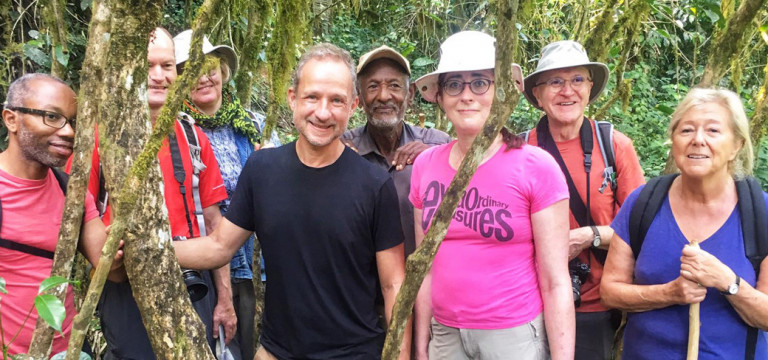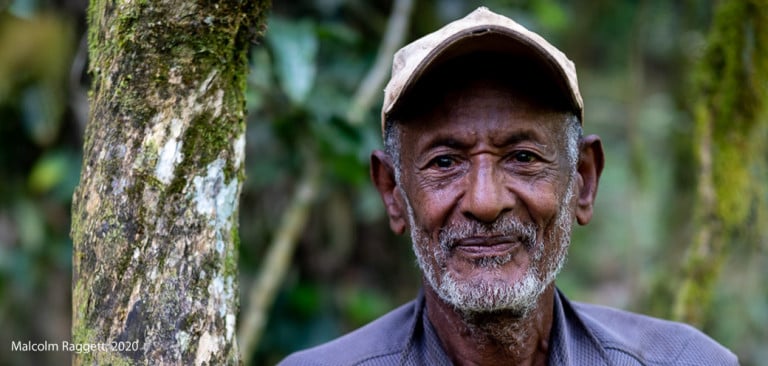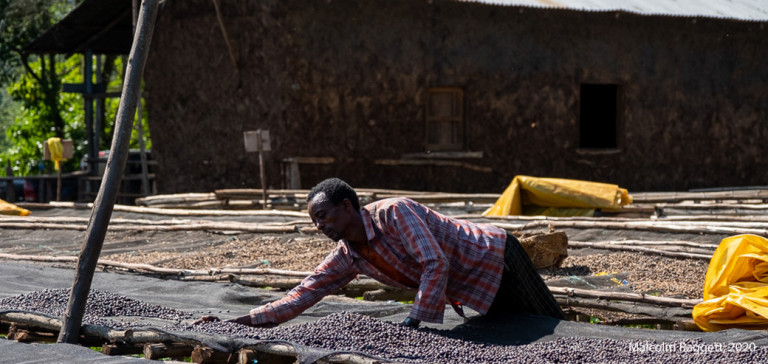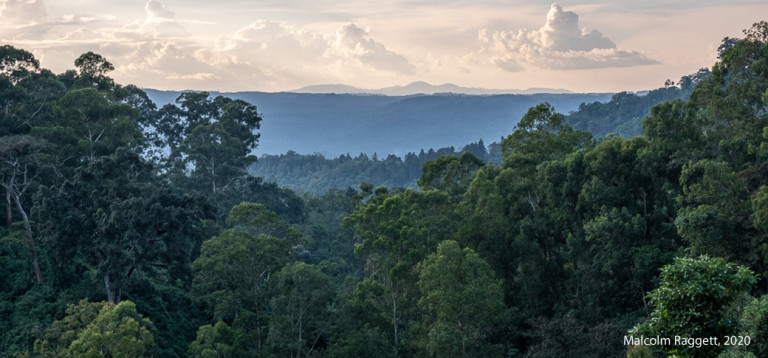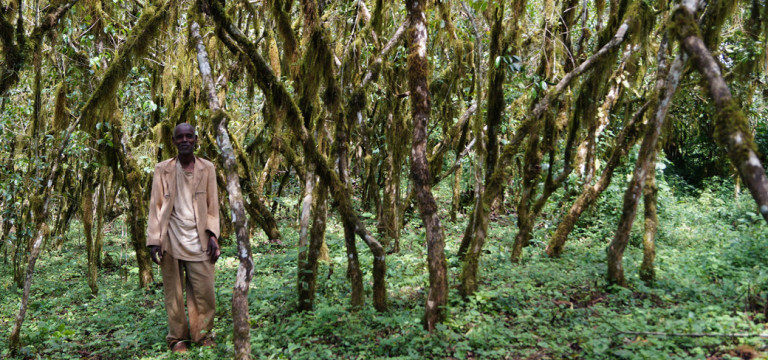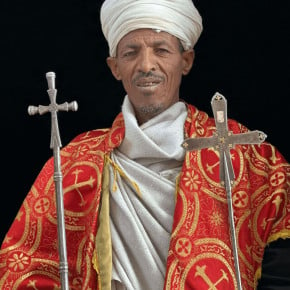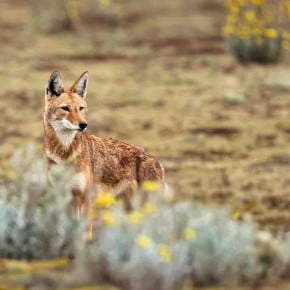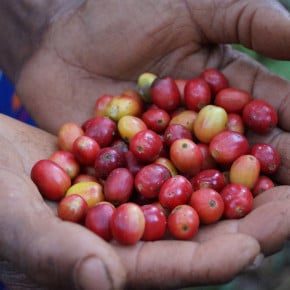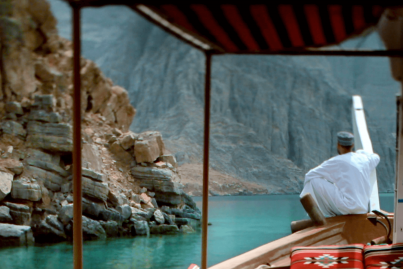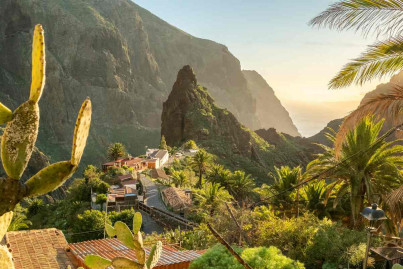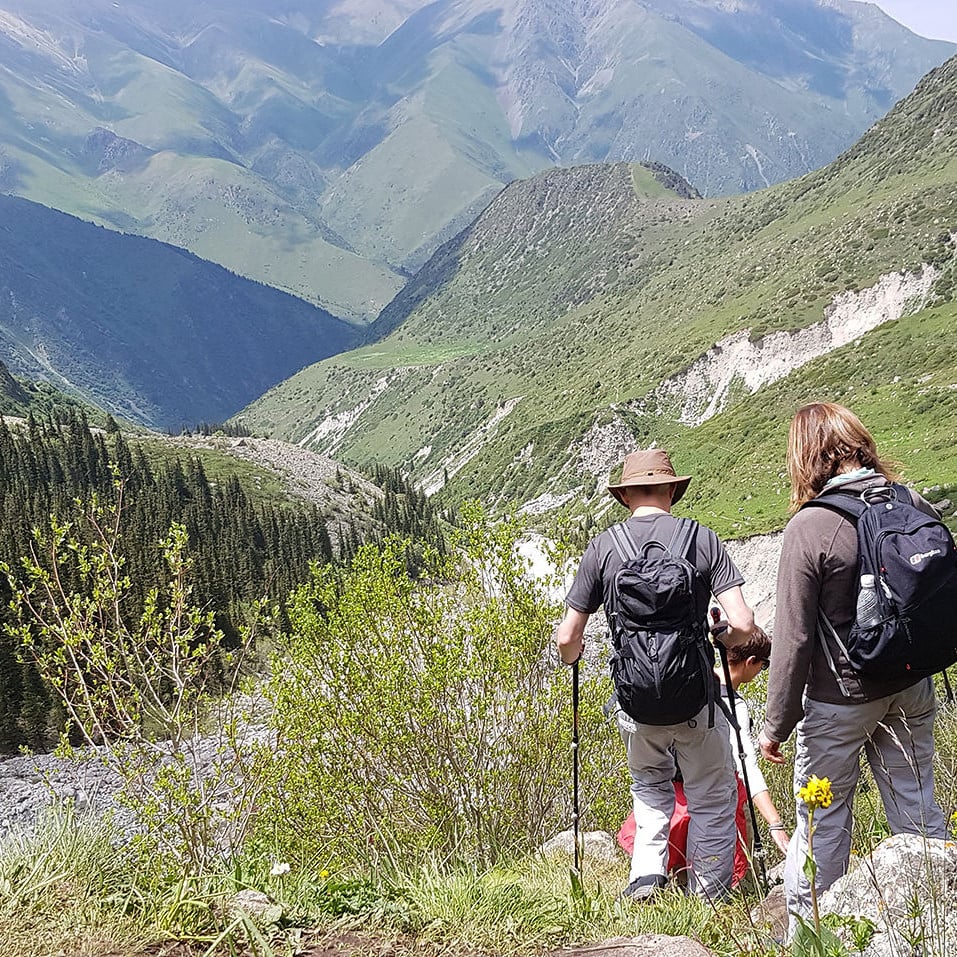Ethiopia is the origin of all coffee. The famous story is that a goat shepherd many moons ago in the lush jungles of the south saw his flock acting strangely after having eaten some red berries from a bush he had never seen before. He collected some of the mysterious berries and took them home to his wife.
His wife experimented with the berries and the precious beans inside of them using the wood fire in the centre of their thatched hut. She discovered that if the beans (two half-spheres separated by a membrane inside every berry) were first roasted over a flame and then ground down into powder; they would release their magical properties.
The small village they lived in is called ‘Buna’ which is the Amharic word for ‘coffee’ and is used across the country to describe the now national drink. The village of Buna is inside the ‘Kaffa’ Province (now a UNESCO-protected Biosphere Reserve), which is where the more internationally recognized word for ‘coffee’ originates.
The Ethiopian Coffee Ceremony
Drinking coffee is accompanied by the ancient coffee ceremony. Fresh green grass leaves are strewn across the floor while a woman nearly always wrapped in the traditional light shawl called a netela will go through the rather long process of roasting, grinding and brewing the fresh coffee over a fire.
She will waft the smoke from the roasting beans over the brows of her guests as a blessing, whom sit around her on short wooden stools. The buna is brewed in a large black rounded clay pot called a jabanah before being poured into very tiny white porcelain handleless cups, mixed with a veritable mountain of sugar.
It is rare for a guest to have less than three cups at a single sitting. His/her cup is always dipped in a pail of water before each refill. Coffee has since spread all over the world but Ethiopia remains one of the key international producers; boasting some of the finest and most complex flavours on the market.
Heading down to the southern jungles
The nature of my adventure down into the coffee jungles of Ethiopia was a rather unforeseen and spontaneous affair. I had just run a private trip for eight clients in the Maasai Mara of Kenya, seeing the wildlife and visiting some local Maasai villages before catching the short flight back up to Addis Ababa where I had to be for some days for work. Concluding my business in the capital much quicker than expected, I found I had a week to spare.
I travelled overland by road, which although took an entire day, was what I was in the mood for. From Jimma, I caught a second local bus and stared out the window in wonder as I entered beautiful, luxuriant jungle scenery. This was the only corner of Ethiopia I hadn’t been to before and I couldn’t believe the contrast: There are many different climates and ecosystems across the vast landmass of the country, but this was by far the most fertile.
The bus rolled up to the top of the paved road that cut through the lush vegetation and red dirt like an artery. The usual shacks of mud, thatch and corrugated iron hugged the roadside but they were painted in much brighter colours than elsewhere, and similarly the women’s clothes and shawls were in piercingly bright colours and patterns – like bright tropical birds – compared with the more traditional whites and greys.
The town of Bonga
Bonga rests on the brow of a hill, entrenched against the ever-continuing barrages of jungle that crash against it in vast arcs of greenery undulating from a watery horizon. The foliage of huge, ancient trees with impossibly tall trunks stand above the canopies like space stations, mist and cloud drifting beneath them. The town is the usual hustle of Africa with tuk-tuks, Coca-Cola bottles, small bars, fried chicken stands, flocks of goats, people bargaining and begging, flirting and fighting, shouting and laughing. Hardly any tourists, which is just how I like it.
What a lot of people don’t know is that if you leave a coffee plant untended, given enough time it will grow into a tree. And that is exactly where my local guide Bereket took me; an ancient forest comprised of wild coffee trees. Lichen hung down from slender trunks that rose up like bony fingers to create a low canopy. Coffee is much harder to pick from these wild trees, as you have to clamber up out from the murky half-light to get near the fruit.
There is something incredibly bountiful and Eden-like about the Kaffa Biosphere Reserve. To reach this place we had hiked up through foothills planted with crops. Small natural streams and rivers irrigated the land, while smoke emerged through the roofs of its grass hut hamlets. Bright red flowers bloomed alongside the pathway while bamboo groves of pale emerald gently knocked together in the wind. Oxen were driven on ahead of steel-tipped, wooden plows, and brightly plumaged birds darted overhead from vine to vine and flower to flower.
Visiting a wild coffee plantation
Coffee needs shade to grow and so clearing space and planting it on the jungle floor is an ideal environment. Walking through a local wild coffee plantation, it felt great to be completely away from humanity. You are completely engulfed by nature; above me black and white bushy-tailed Colobus Monkeys thrashed through the foliage while insects burrowed beneath my feet in the rich soil.
Children played on the outskirts of a tiny hamlet where I was warmly greeted by the families who live there, tending some small cropland hewn out from the jungle’s grasp. “Salamno!” “Salamno!” “Salamno!” It was very humid and I was sweating. The air was fresh and clean and alive. I got stung by a bee on my neck when we passed their beehives.
Come harvest season in October all of the surrounding villages will come out and pick the coffee from these vast natural plantations for weeks on end. It is then sundried on long woven sheets or sent to a washing station (the resulting flavours are very different) before being collected in large hessian sacks to be graded and then either sold locally or on the international market via the ECX (Ethiopian Commodities Exchange) or a licensed plantation.
How to grade coffee
I experienced the grading system, called ‘cupping’, in the ECX office in town. The different coffees are roasted, ground and brewed, then placed in three small cups (to test for consistency). You sample each one – slurping it in your mouth with plenty of air to bring out the flavour – before spitting it in a pail much like at a wine tasting. There is an internationally recognized charting system for grading the coffee on body, roast, richness, bitterness etc and it is great fun to really try and break down the flavours.
I went with Bereket down to meet a friend of his who keeps local bees. We hired a tuk-tuk and got lost looking for him. We ended up far down in the jungle by a large river. Women were washing their clothes and children were splashing about. It was a timeless scene. We eventually found his friend across a flat grass plain filled with cows in front of a grove of the largest eucalyptus trees I have ever seen in my life. They were absolute monsters. Great sheets of silver bark had peeled off from some of them and were lying on the grass.
Everything in this region is overflowing with life in exaggerated proportions. Looking at Bereket and his friend standing there, they had darker skin than many Habasha (Ethiopians) and both had thick arms and potbellies pushing out their white T-shirts as they laughed and joked together, white teeth flashing. I liked them both immensely. We looked at the bees and I didn’t get too close this time. They make a honey-wine called tej but I am allergic to it.
The gardens in the guesthouse I was staying at out of town were lovingly tended to. Bright purple flowers bloomed in flowerbeds and giant aloe bordered the walkways. At night I sat on my veranda in the cool night breeze while a perfect full moon lit up a night sky buzzing with nocturnal calls. I was so happy I had come to such a place.
A night on the town
In town I met an Ethiopian businessman who works for a big insurance company in Addis. He was down to inspect one of the farms that was opening a new policy with his company. He invited me to the classic dinner of tibs: injera flatbread pancake covered with roasted goats meat. We decided to go out and explore the local bars and get outrageously drunk.
We ordered a bottle of whisky at the bar we liked the best and sat down at a table. Some girls came and sat with us. I was the only foreigner in the place. There was a DJ playing Ethiopian music and I had got some popular local song stuck in my head from innumerable bus journeys and asked him to play it. I didn’t know the name and so – not shy after a few whiskeys – I began to sing it to him in tuneful gibberish.
This was naturally enough to set the whole bar roaring with laughter and of course the song was popular here too, so I was an instantly welcomed Citizen. We danced a lot. The insurance man, despite being rather portly, had an unbelievable amount of stamina and enthusiasm and I was sweating buckets by the end of each song trying to keep up pumping my shoulders with my hands on my waist and head-flicking in the classic style.
I missed my chance the next day to visit the famous waterfall and hot springs but I didn’t mind so much. I needed quite a few coffees that morning.

